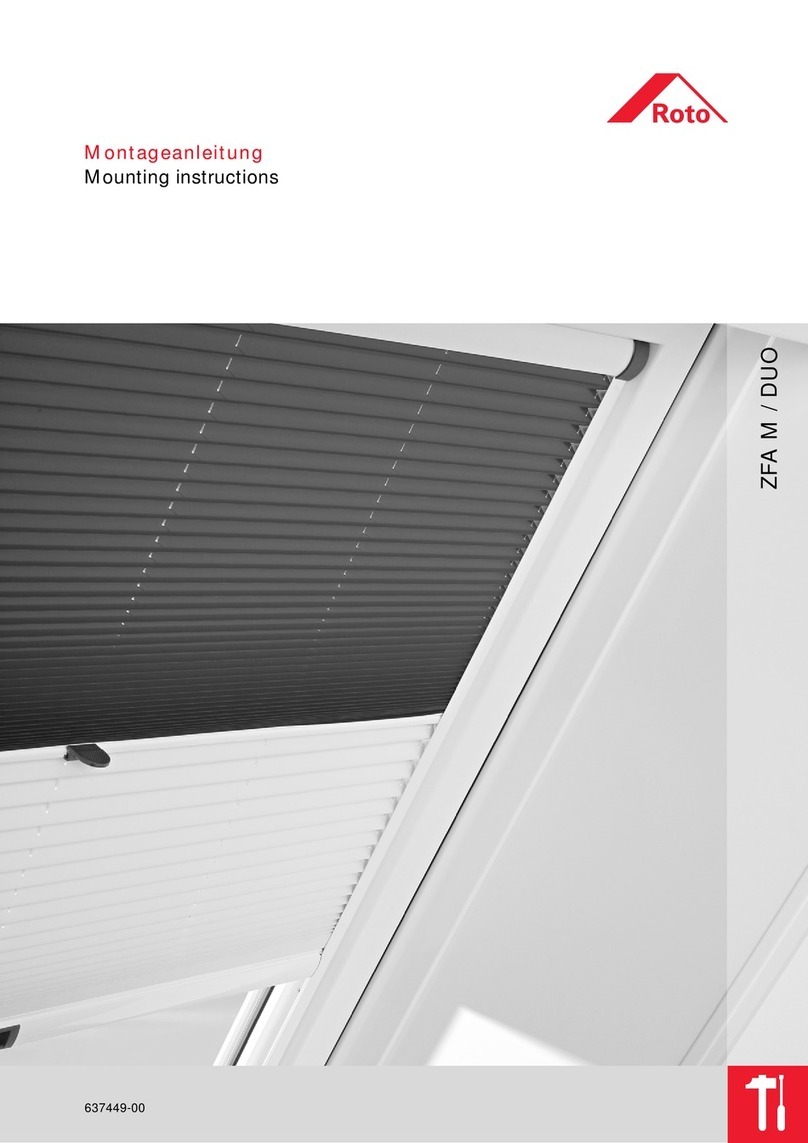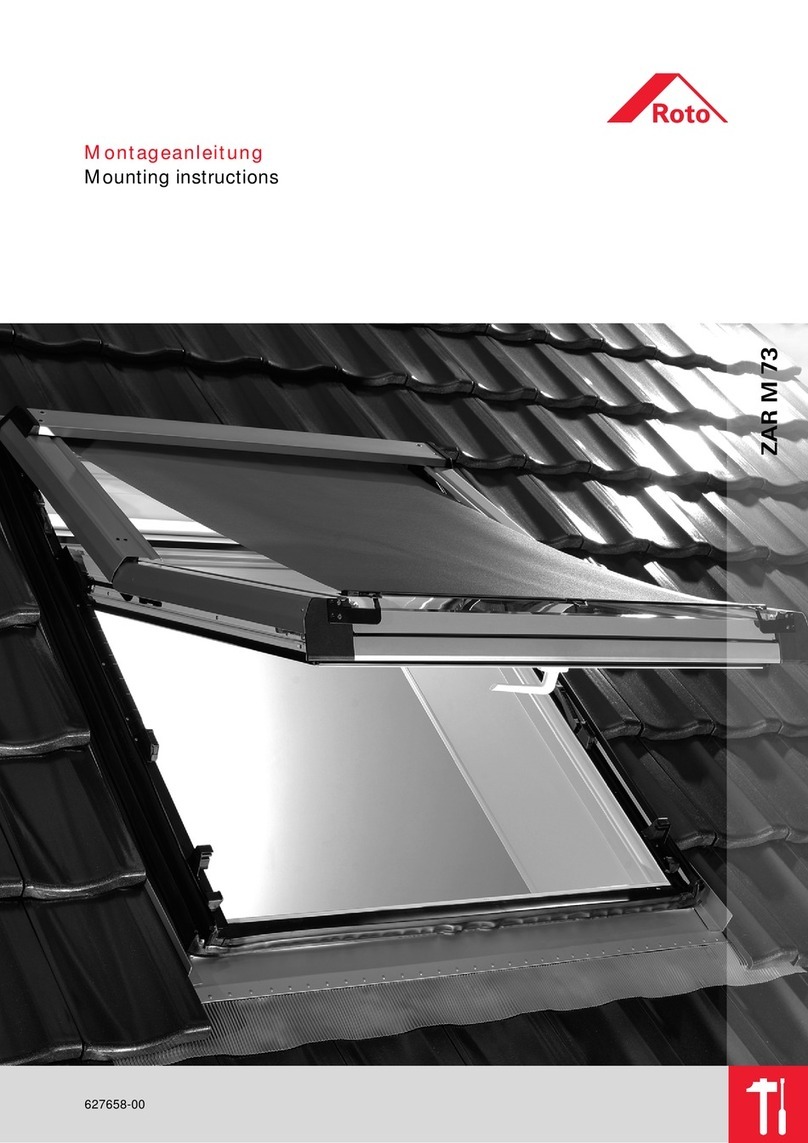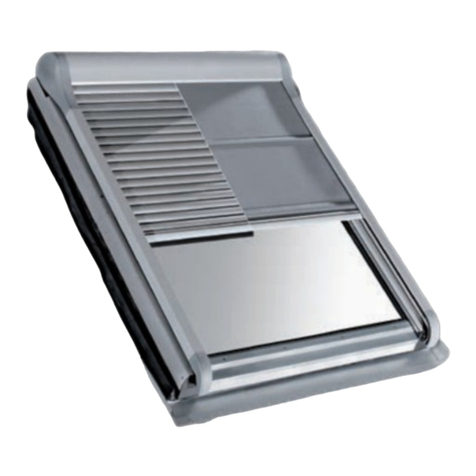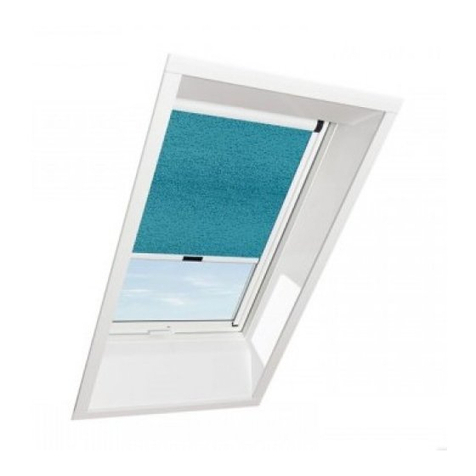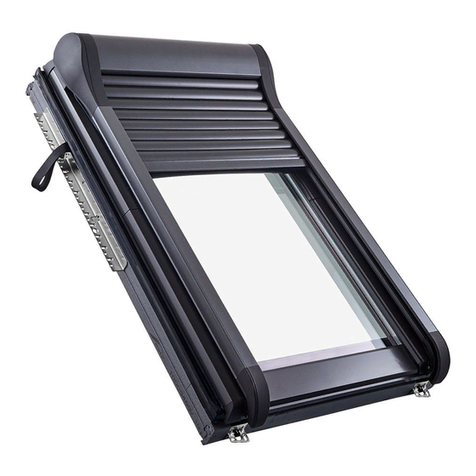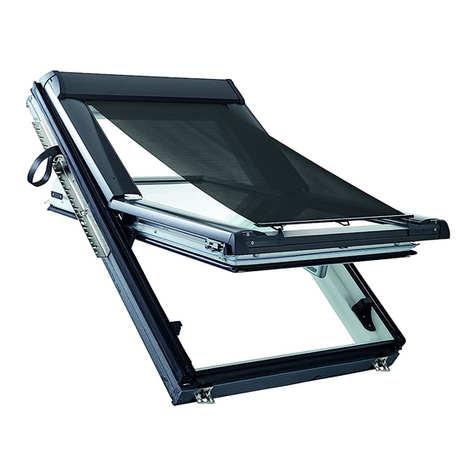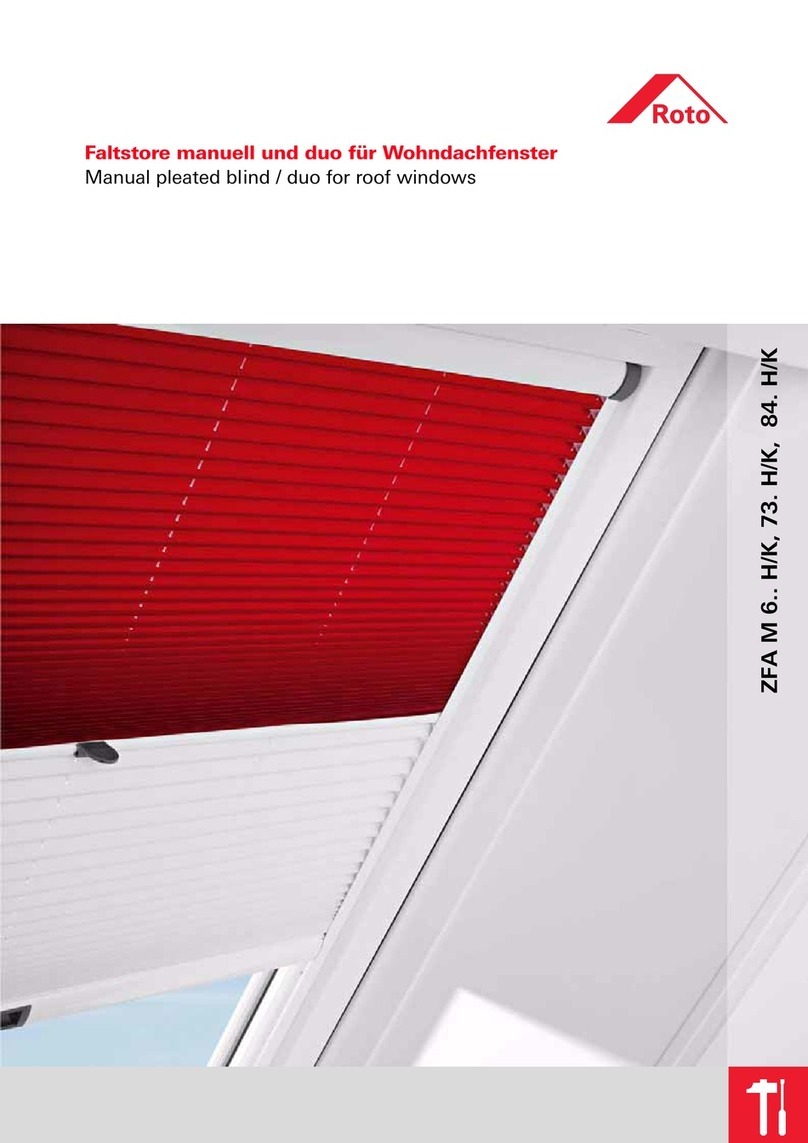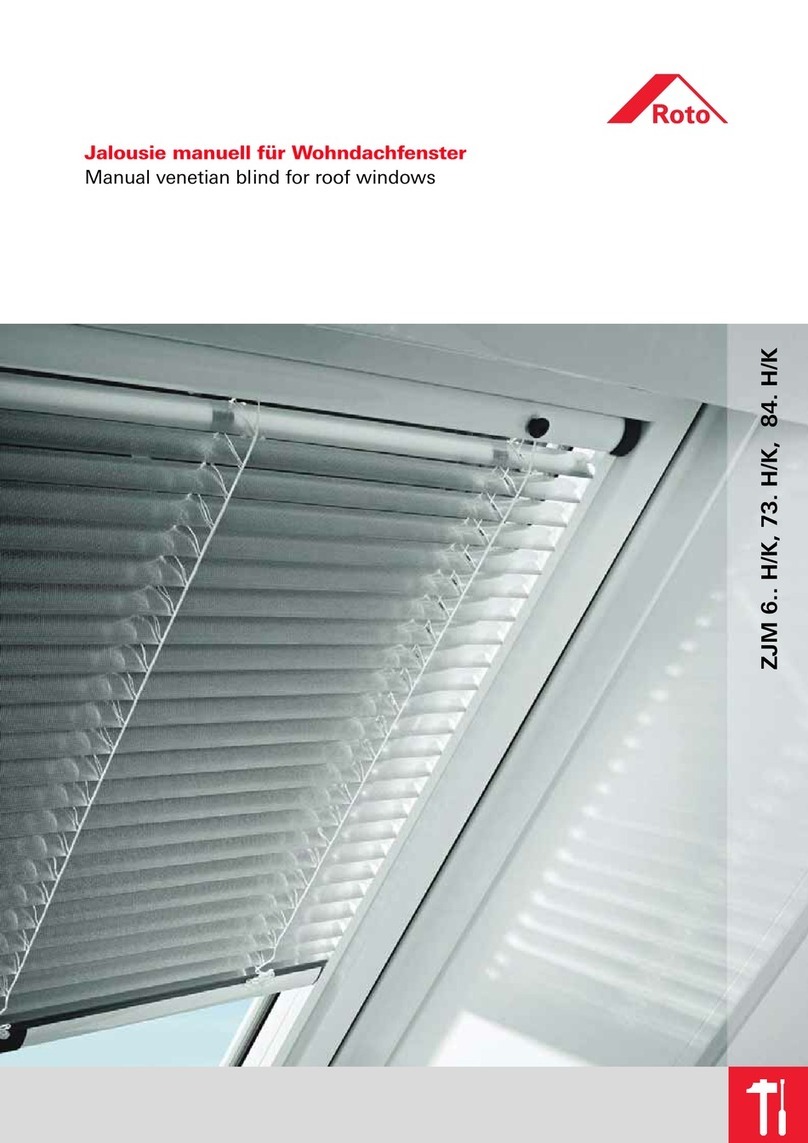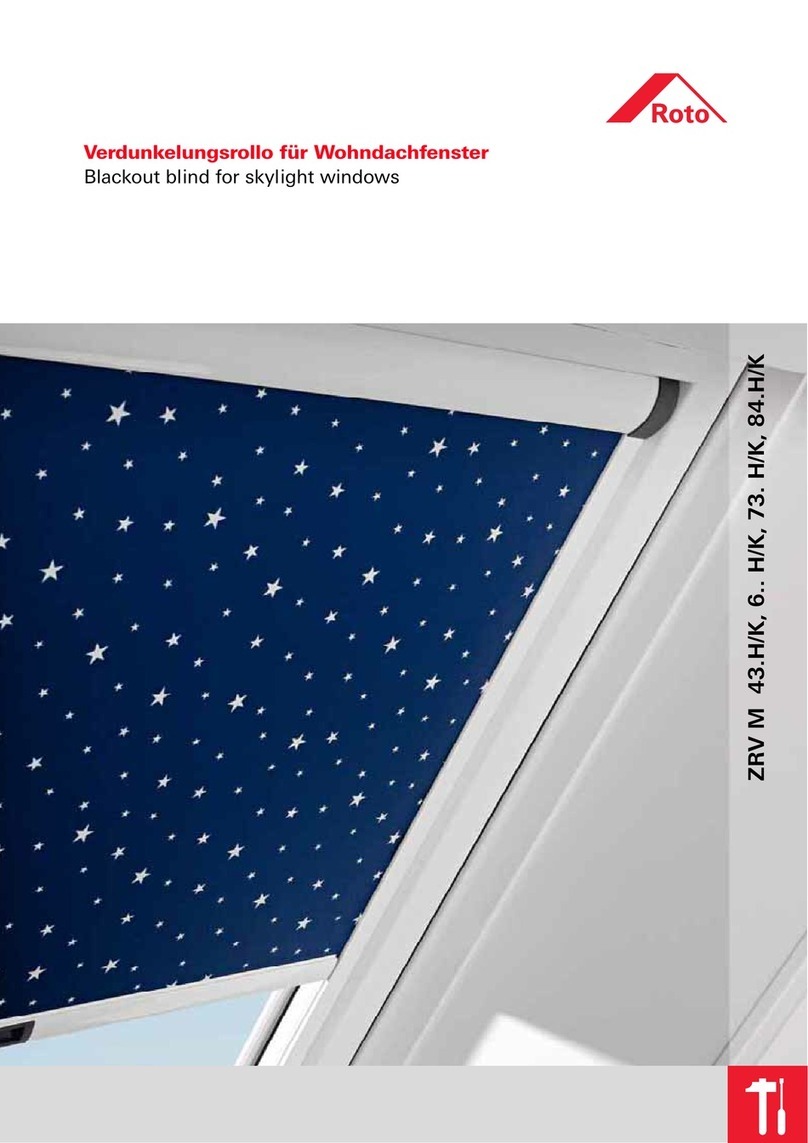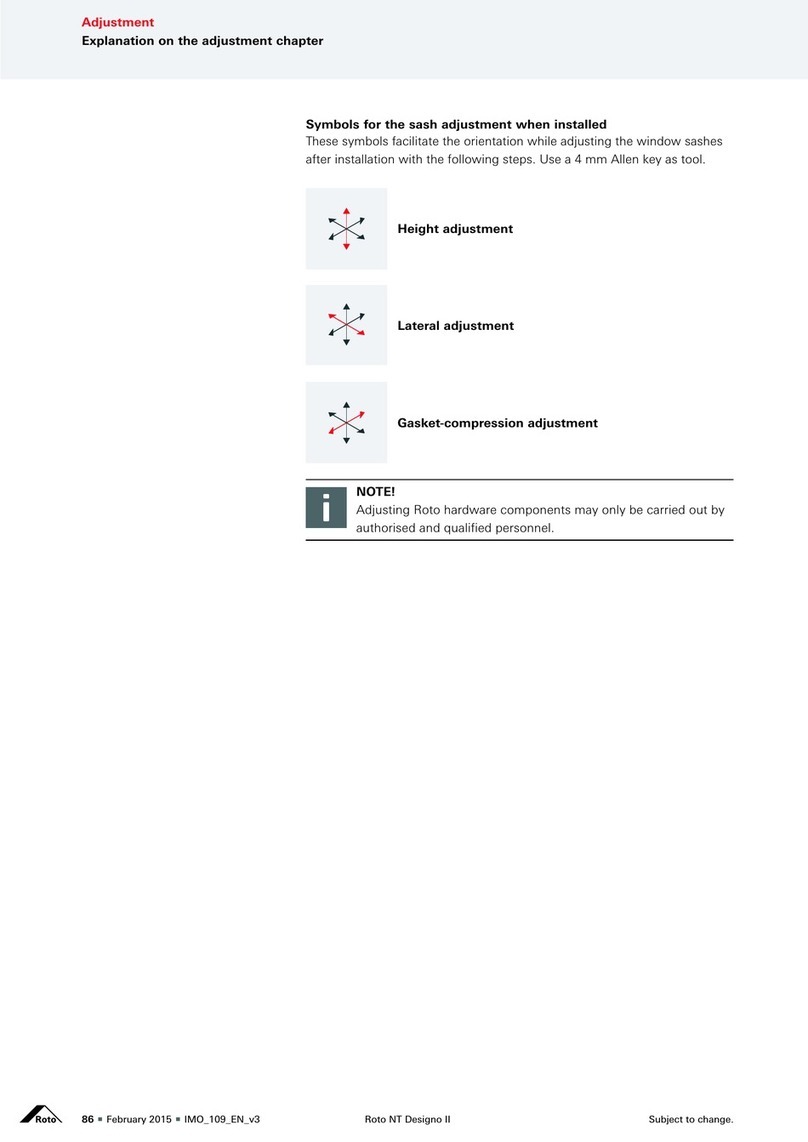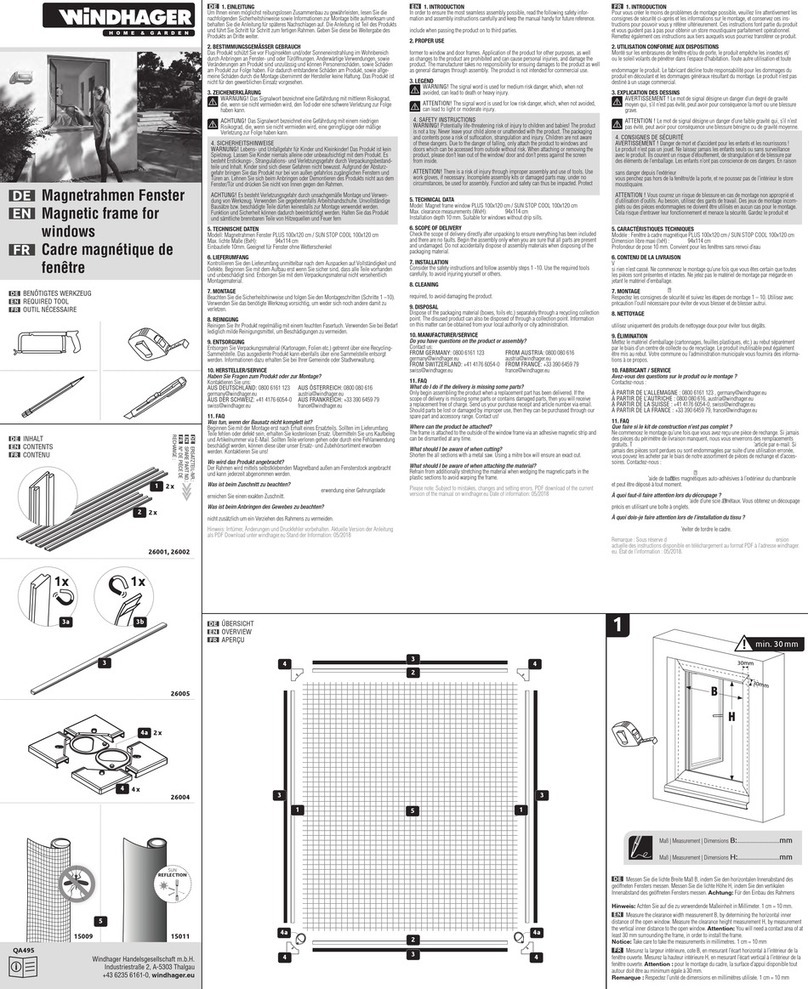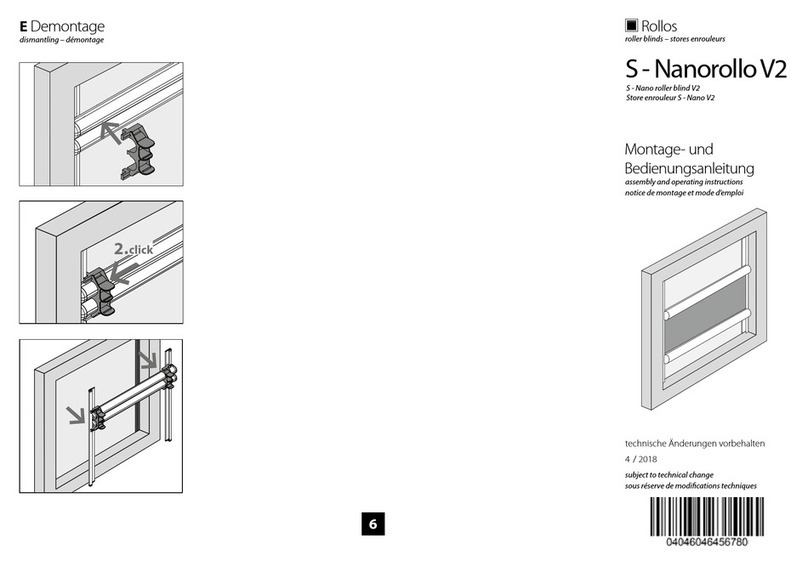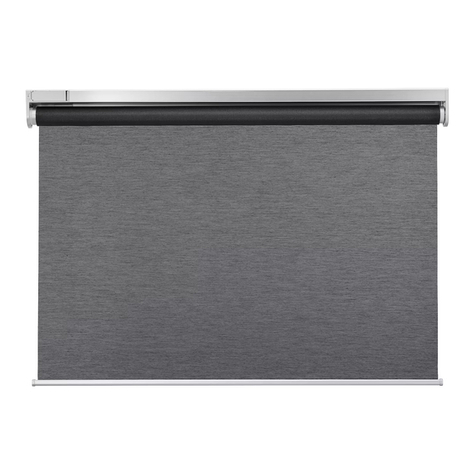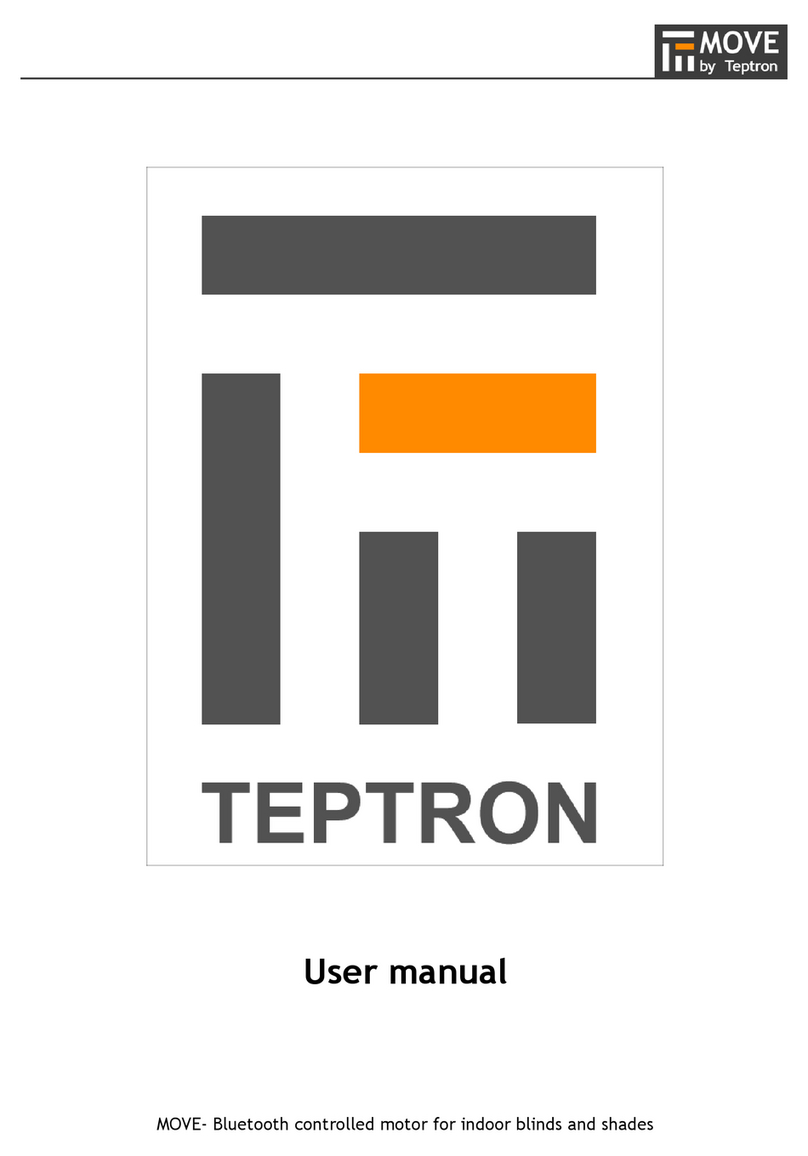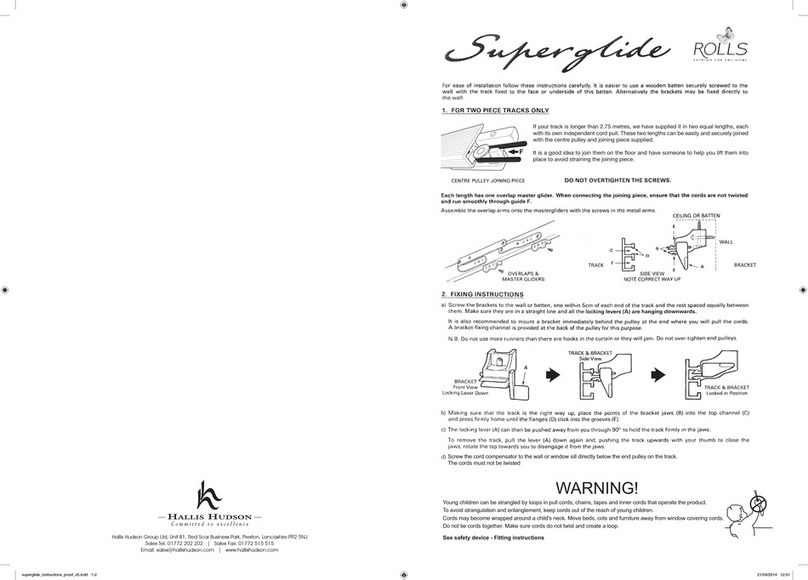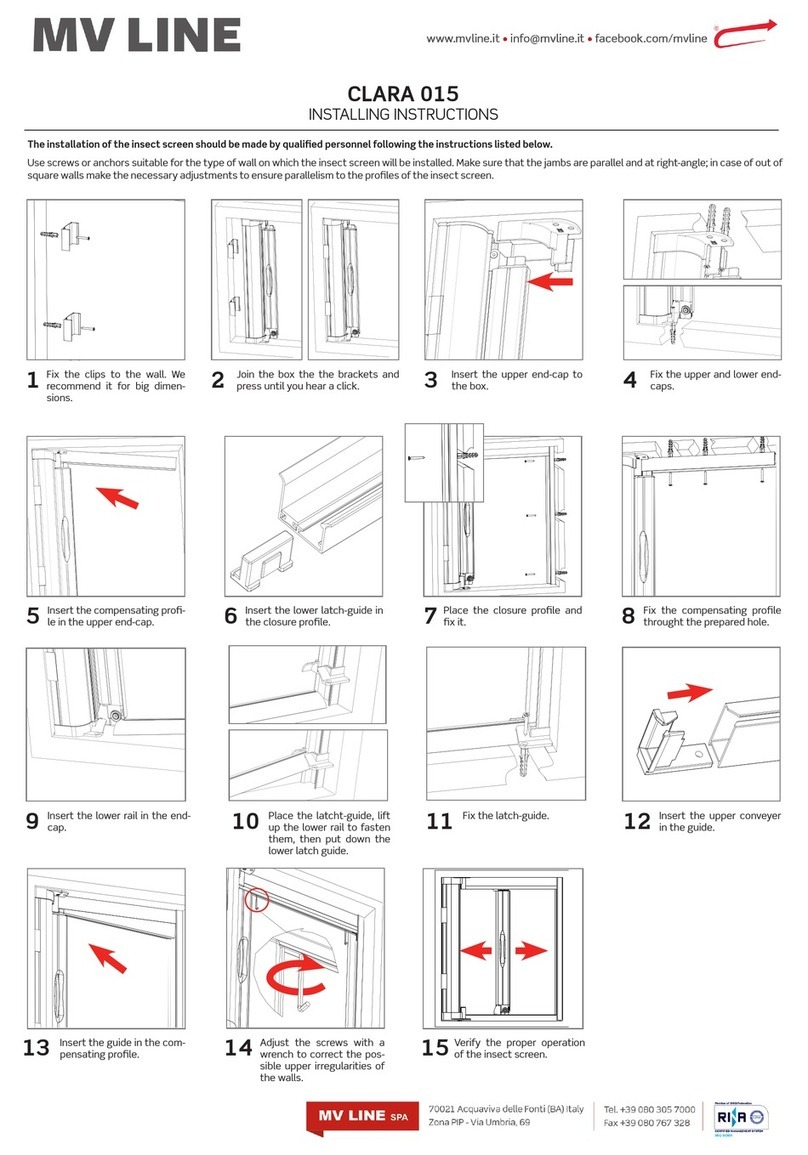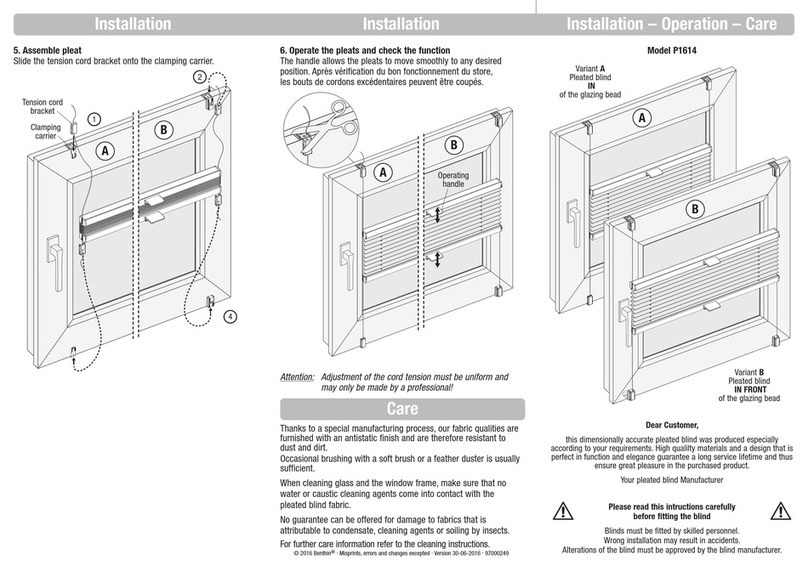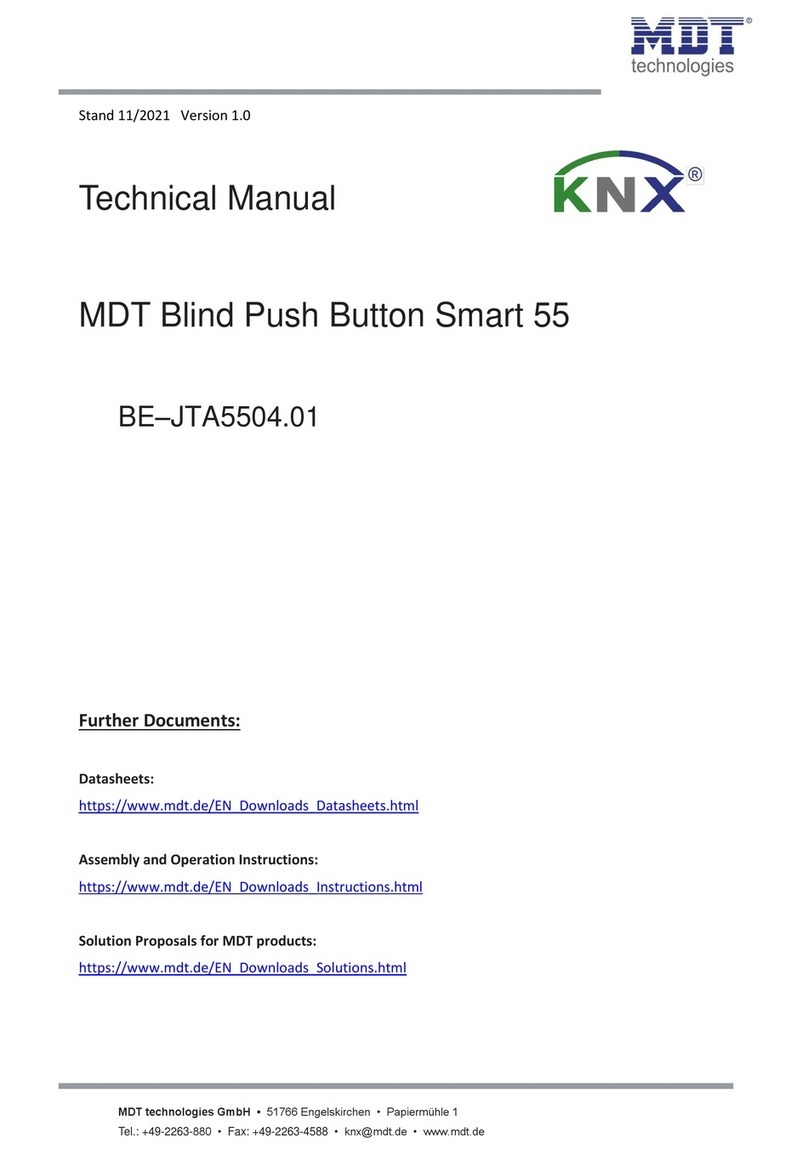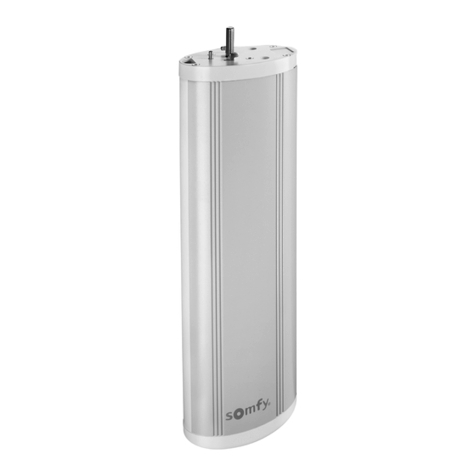
6
Consignes générales de sécurité
• Les instructions de montage s'adressent à des po-
seurs qualifiés.
• Le poseur du produit doit posséder les connais-
sances suivantes :
• Respect des règles de prévention des accidents
• Manipulation correcte des échelles et des aides à
la montée
• Mise en place correcte des éléments de fixation
• Évaluation des volumes bâtis
• Mise en service et utilisation du produit
• Si le poseur ne dispose pas de l'une de ces qualifica-
tions, il faut mandater une entreprise de mon-
tage compétente.
• Lire soigneusement ces instructions avant la pose et
l'utilisation.
• Observer toutes les étapes de montage, les instruc-
tions et des indications préconisées !
• Veiller à ce que ces instructions restent accessibles à
tous les utilisateurs.
• Conserver soigneusement ce manuel jusqu'à élimi-
nation du produit.
• Remettre ces instructions au nouveau propriétaire en
cas de transmission du produit.
Utilisation conforme à l'usage prévu
Le store extérieur est destiné à l'utilisation en extérieur
sur les fenêtres de toit et sert à protéger de la chaleur.
Il est prévu exclusivement pour une pose et une utilisa-
tion sur des fenêtres de toit ROTO.
Le store extérieur réfléchit et absorbe une grande partie
du rayonnement thermique, mais n'offre pas une pro-
tection à 100 % contre la chaleur (au sens physique).
Si le store extérieur est soumis à des charges, p. ex. en
y accrochant des objets, il peut être endommagé. C'est
pourquoi ceci est expressément interdit.
A l'exception des opérations décrites ici, aucune modi-
fication, extension, transformation ni aucun travail
d'entretien ne peut être effectué sur le produit sans au-
torisation écrite préalable de ROTO.
Déballage / contrôle du contenu
de la livraison
(figure A1)
⚠Risque d'étouffement!
Les pièces en plastique, en polystyrène, les
vis, les petites pièces, etc. peuvent être dan-
gereuses pour les enfants s'ils jouent avec.
> Ne pas laisser traîner les emballages ni les pièces
de montage et les tenir hors de la portée des en-
fants et des enfants en bas âge.
> Tenir les enfants à l'écart de l'emplacement de
pose pendant toute la durée du montage.
⚠Risque de blessures et de dommages maté-
riels dus à un store extérieur endommagé!
> Vérifiez l'état technique parfait du store extérieur
avant de le monter. Ne monter le produit que si
celui-ci est en parfait état technique.
• Eliminer le matériel d'emballage conformément aux
dispositions locales.
• Contrôler le contenu de la livraison. Si des pièces
manquent, les demander auprès de votre distribu-
teur spécialisé.
Pose
(figure 1-6)
⚠Risque de chute !
La pose s'effectue en partie par la fenêtre
ouverte!
> Ne pas se pencher hors de la fenêtre de toit.
> Choisir un emplacement stable.
> N'utiliser que des aides à la montée stables, et of-
frant un appui et une force de portée suffisants.
> En cas de travail à des hauteurs élevées, il faut
impérativement utiliser des protections antichute
appropriées.
> Ne jamais se tenir au store extérieur ni au store en
toile.
⚠Risque d'écrasement et de blessure dû au
basculement de la fenêtre de toit !
> Protéger la fenêtre contre tout basculement in-
tempestif (voir les instructions de montage de la
fenêtre de toit).
> Pendant le basculement, tenir les mains éloi-
gnées de la zone du châssis de la fenêtre.
⚠Risque de blessures dues aux chutes de
pièces !
> Utiliser exclusivement le matériel livré et un ma-
tériel de fixation adapté au matériel du cadre de
la fenêtre.
> Ne jamais déposer d'outils et de matériel de fixa-
tion sur les aides à la montée.
⚠Risque de chute due à la surprise !
En cas de contact de la toile du store avec la
main ou un objet, il peut se produire une dé-
charge électrostatique et des bruits (claque-
ments, grésillements) !
> Se tenir sur un support solide.
Français
7
!
Manœuvre
⚠L'orage, la neige et la pluie peuvent endom-
mager le store extérieur !
> Rentrer le store extérieur à temps avant des
orages, des intempéries, des fortes bourrasques
de vent et des chutes de neige. (la garantie ne
couvre pas les dommages dus aux intempéries!)
⚠Risque de détérioration de la toile de store
mouillée par la pluie !
> Remonter le store extérieur en cas de pluie ou ne
pas le déployer.
> Ne manœuvrer le store extérieur qu'une fois la
toile du store complètement sèche.
⚠Risque de détérioration de la toile
de store gelé !
Par temps froid, le store extérieur peut geler.
> Ne manœuvrer le store extérieur qu'après le dégel.
⚠Risque d'écrasement et de blessures !
> Maintenir la zone de déploiement et de rentrée
libre de tout obstacle fixe et mobile.
> Lors du déploiement et de la rentrée, ne pas tou-
cher les pièces mobiles et ne pas tirer sur la toile
du store.
Entretien et maintenance
Entretien
(sans illustration)
⚠Un nettoyage incorrect peut peut entraîner
des dommages matériels.
> Ne pas utiliser de nettoyeur haute pression, de
produits à récurer ou d'éponges à récurer ni de
solvants (p. ex. l'alcool ou l'essence).
Pour une grande longévité, nous recommandons:
• de brosser avec précaution la toile du store au moins
une fois par.
• de veiller, lors de l'ouverture du store extérieur, à ne
pas entraîner de saletés (p.ex. feuilles, brindilles).
• de procéder au moins une fois par an au contrôle de
fonctionnement du store extérieur.
• de faire réparer les dommages à temps par un ser-
vice agréé.
Correction de la tension du mécanisme à ressort
(figure B3-B4)
Après une utilisation prolongée, le mécanisme à res-
sort peut perdre en tension et nuire ainsi au fonction-
nement du store extérieur.
Si, lors de l'ouverture, la toile du store se déploie sans ten-
sion, il faut corriger la tension du mécanisme à ressort.
Dépose et élimination
(sans illustration)
Les stores extérieurs ou les composants usagés ne
doivent pas être éliminés avec les ordures ménagères.
Français
